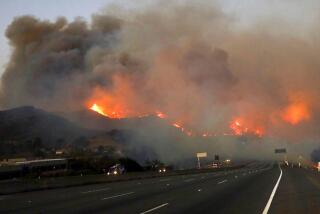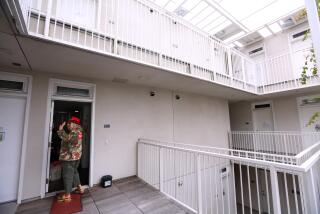The $99 storm-water solution
Last week, the city of Los Angeles decided to postpone asking voters to pay higher fees to clean storm-water runoff. Given the economy -- and the recent failure of Measure B, a solar energy initiative -- the decision to not rush the vote was probably wise. But we can’t put off raising fees forever.
Five years ago, Los Angeles voters passed Proposition 0, which allotted $500 million in bond money to improve water quality in the county. When these projects are completed, major sources of pollution will have been eliminated and the L.A. River, Santa Monica Bay and local watersheds will be far cleaner.
But Proposition 0 wasn’t a panacea. It left some serious water-quality problems that need to be addressed. And it put in place systems that will have to be maintained. That can’t be done on the current assessment of $23 a household each year for storm-water pollution cleanup.
L.A. is at a crucial place in its environmental history. The city has long been in violation of federal summer beach bacteria regulations. And we are coming up against regulatory deadlines for cleaning up winter beach bacteria, as well as nutrients and pesticides in Machado and Echo Park lakes and toxic metals in the L.A. River and Ballona Creek.
The good news is that, two weeks ago, the Board of Public Works approved an L.A. water-quality plan that moves us in the right direction -- if we come up with a way to pay for it.
The mayor’s initial plan was to send out a mail-in ballot to all homeowners in the city asking them to approve fee hikes that would raise the annual water-quality assessment from $23 to $99 by 2014. That plan was scrapped after the City Council decided the move was too abrupt. The council cited the defeat of Measure B in March as evidence that voters needed to be educated on an issue before they would agree to spend money -- even on an environmental measure they supported in principle.
Fair enough. So let’s start the education.
We’ve come a long way in cleaning up Southland water. The beaches are safer for swimmers in summer. Santa Monica Bay no longer has a dead zone, and locally caught fish no longer have tumors. These major environmental successes were because of improvements in sewage treatment plants; now we need to be as rigorous in reducing storm-water pollution.
But the current storm-water assessment of $23 a household -- a fee that has not been raised in 16 years -- is just not enough to clean up and maintain our long-neglected rivers, lakes and beaches.
The proposed $76 fee hike would be phased in over five years. Despite the sizable increase, the $99 annual household fee would still be far less than those paid by residents of Santa Monica, Sacramento and other cities.
The Jarvis anti-tax folks are already squawking about the idea -- although their point that the measure shouldn’t be rushed through without public comment is a good one.
But now that the ballot measure has been slowed down for public education and comment, I would challenge those who say we shouldn’t raise fees to explain how we can attain the high standards needed to protect the environment and public health -- and required by law -- without additional funding.
In the end, the city will have to decide whether to put the measure to voters as a fee hike, in which case a simple majority of homeowners would have to support it, or as a ballot measure that would require the approval of two-thirds of the voters citywide. Whichever approach is chosen, it will need to be carefully explained that the funds will be used exclusively to protect public health and the environment.
As they did to overhaul the faulty Hyperion Sewage Treatment Plant, voters need to dig deep and provide the resources to clean up local waters. These funds will create and maintain for the long haul a green infrastructure that will cut pollution, augment local groundwater supplies, reduce flood risk and improve the quality of life for millions of residents.
Without a steady stream of funding, the public health of swimmers and surfers will remain at risk and the aquatic environment will remain degraded. Violations of water-quality requirements will continue to grow along with the city’s liability under the federal Clean Water Act.
Passing a fee increase is always difficult, but enacting an increase in this dire economy leaves no margin for error. Given the missteps on Measure B, strong leadership and communication from Mayor Antonio Villaraigosa and the City Council are essential to reach the mayor’s goal of making L.A. the cleanest, greenest major city in America.
More to Read
Sign up for Essential California
The most important California stories and recommendations in your inbox every morning.
You may occasionally receive promotional content from the Los Angeles Times.










